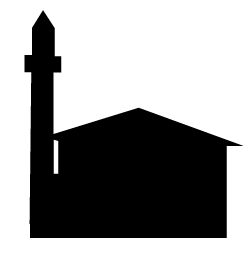Tskhmorisi
Tskhmorisi Mosque
Tskhmorisi mosque became part of the Keda Cultural Route in 2016, a distinction that garnered support from regional authorities for renovations after decades of Soviet era use as a warehouse. Although these renovations involved covering much of the interior with unpainted pine wood paneling, the most significant decorative elements remain visible. Remnants of painted floral motifs (found on a small door below the stairs and on the right side of the minbar) would suggest that beneath this paneling the mosque was once vividly decorated with red, blue, and green murals. Colorful flowers, knotted tassels, wreaths, and swags seemingly drawn from European decor adorn the large white dome. Other paintings in the prayer hall bear a strong resemblance to those made by Laz masters Omer Usta and Usta Bin Ahmed at other mosques during approximately the same period. The mihrab niche, for example, is painted dark green with a floral bouquet and a row of crescents, not unlike those at Beghleti and Dghvani. The distinctive bubble or pebble motif also found at these other two mosques appears on Tskhmorisi’s minbar portal and some doric column capitals. In addition to extensive paintings, the prayer hall features a mixture of incised and applied carvings. At Tskhmorisi, however, many of the applied carvings depart from the commonly used templates and instead display far more distinctive floral or abstract motifs. The minbar, decorated with the complex interlaced rosette motif made popular with applied ornament, is (astonishingly) entirely hand-carved. The door and door-frame, likewise, reference common applied ornament templates but renders them by hand.
DISTRICT : Keda
LOCATION : 41°38’29.7”N 42°02’56.1”E
POPULATION : 600
CONSTRUCTION DATE : 1891-1892 (hijri 1310)
RENOVATION DATE(S) : 1990s; 2016-2017
CRAFTSMEN : Unknown
MINARET : Yes

